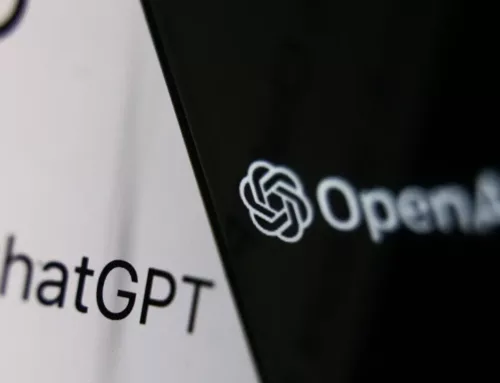Existing quantum technologies can be employed to retain liberty, autonomy, and freedom, thus improving our lives while we cohabitate with this world-historical virus.
Having wrestled with a pandemic since early 2020, it seems clear Coronavirus is something we are going to have to live with for the foreseeable future. The necessity to maintain even the minimum level of domestic and international travel for trade and business, in the context of uneven vaccine regimes across and between nations, suggests the inevitability of virus mutations and an endless parade of novel ‘variants.’ The ‘new normal,’ therefore, is likely to be a reality tracking a classical, mechanical trajectory with classical, mechanical solutions. There exists, however, the possibility to reorient our future, informed by ‘enlightened,’ quantum potentials. In this piece, I’ll outline how leaning into our quantum future could generate a reality with far more liberty and individual freedom than simply pushing on with the old Newtonian mindset and its well-worn technologies. Rather than being merely promissory, I’m going to present existing quantum technologies that can be employed in the here-and-now to greatly improve our lives while we cohabitate with this world-historical virus.
Three quantum programs might enhance our liberty: quantum track-and-trace, quantum diagnosis, and quantum antivirals. The first program would leverage quantum neural networks and machine learning, while the second and third programs employ quantum dot technology.
Quantum Track-and-Trace
The basic problem with conventional track-and-trace programs is they need to track everyone, all the time. This suggests a degree of state surveillance without historical parallel. Even the PATRIOT Act, passed following the 9/11 attacks, has mandatory minimums law enforcement must meet before a FISA court will authorise a phone-tap or personalised data release. Today’s track-and-trace, however, as noted by the authors of, Computational Intelligence Methods in COVID-19: Surveillance, Prevention, Prediction and Diagnosis, does not even offer the pretence to privacy and personal autonomy. Enormous datasets are required, while personal activity across “online social networks” such as “Twitter, Facebook, Whatsapp, etc.” are exploited. Apps need to be installed on every personal handheld device, GPS data is gathered, and overhead drones surveil and map the movement and interaction of the entire population. In the context of a national emergency, these protocols may seem palatable. But it is a maxim of governance that once a crisis has dissipated the institutions remain. Indeed, although it has been twenty years since planes flew into the ‘Twin Towers,’ the ‘war on terror’ rumbles on, morphing and modifying scope and object, while its concomitant surveillance apparatus prevails.
Quantum track and trace, however, does not require primitive methods such as persistent and omnipresent surveillance. The use of quantum neural networks and machine learning mean far less data can tell us far more about the probable location, trajectory and outcome of new infections. In 2020, computer scientists, Siddhartha Bhattacharyya and Pranav Kairon, performed experiments with neural networks, demonstrating their two quantum models outperformed classical, statistical methods when “checking the rise of confirmed cases,” as well as “calculating the rise in the number of deaths.” In the same year, when testing quantum machine-learning algorithms on the IBM quantum computer, scientists, Erdi Acar and Ihsan Yilmaz, found that “if the size of the data set is small… in terms of machine learning, quantum computers seem to outperform traditional computers.” The principle revealed in both studies is clear: quantum technologies render more reliable epidemiological information about COVID using less initial data than conventional, statistical techniques. The upshot being, quantum track-and-trace can inform policymakers better without the need for constant and comprehensive population surveillance.
I, for one, like the idea of keeping society safe without turning every individual into a necessary and discrete data point.
Quantum Diagnosis
It’s an uncomfortable fact, but, according to Yuwei Zhang and her team of quantum engineers, conventional lateral flow tests, “misdiagnosed ~2 out of 3 SARS-CoV-2 positive patients.” On the other hand, the diagnosis device their team designed using quantum dot nanotechnology demonstrated around “3 times greater clinical sensitivity because it is ~140 times more analytically sensitive than lateral flow assays.” Quantum dots are miniaturised semiconductors, a few nanometres in size, often referred to as ‘artificial atoms.’ Due to their size and sensitivity, they can detect and relay information far more effectively than conventional molecular technology. Zhang and the team engineered a fully functional diagnostic tool, using quantum dots, designed as a periphery device for contemporary smartphones. Since it is obviously utterly unsatisfactory to misdiagnose 2 out of 3 positive infections – in the context of a pandemic – Zhang’s method of quantum-dot-diagnosis is a ‘must have’ in the quantum toolkit of the future.
Quantum Antivirals
When it comes to combatting viral diseases there are two weapons at our disposal: vaccines or antivirals. Vaccines are intended to promote the development of antibodies so patients resit infection, or more effectively fight off disease. Antivirals, on the other hand, simply attack and destroy the virus head-on, thus preventing progression of the disease and further transmission. Unfortunately, there are no specific SARS-CoV-2 antivirals presently available, and the recently developed vaccines are proving dubiously effective in preventing its transmission – let alone dealing with novel 2021 variants such as ‘delta’ and ‘lambda.’ In 2020, organic chemists, Selvambigai Manivannan and Kumar Ponnuchamy, conducted tests using quantum dots (QDs) as antiviral conduits, and found that the, “positive surface charge of carbon-based QDs could be used to sequester/disable the S protein of SARS-CoV-2.” According to Manivannan and Ponnuchamy’s research, quantum dots may once more come to the rescue, promising a future where COVID is ‘exterminated’ “from the human community.”
Robert Frost famously told us:
“…two roads diverged in a wood, and I—
I took the one less travelled by
And that has made all the difference.”
At present, we find ourselves in an analogous yellow wood, presented with two paths: one well-trodden and familiar, and the other fresh, green, and full of promise. Let’s set aside the temptation to walk down the same, brown path we walked in 2001, and instead embrace our green, quantum future. Through quantum technologies such as neural networks, machine learning, and dots, we might spare ourselves a reality where every single person is tracked, monitored, and sampled – all the time and everywhere – and, instead, regain some of the liberty, autonomy, and freedom of movement we once considered part-and-parcel of being a wanderer in this wood called ‘life.’







Leave a Reply